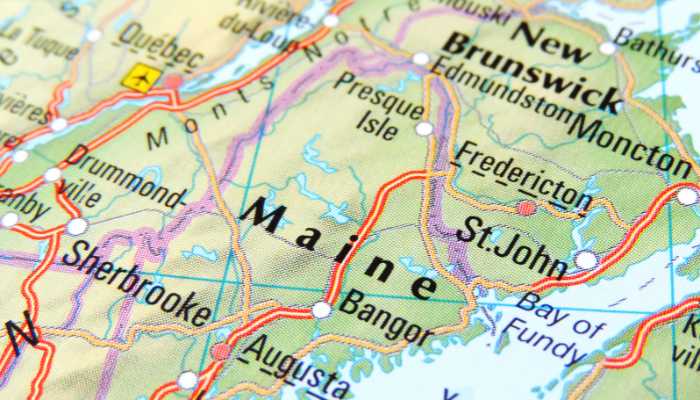Maine is the northeasternmost state and is known for its rocky coastline, picturesque villages, lighthouses, and lobster fisheries.
The state’s agricultural sector is relatively small, but it is diverse and includes dairy farms, blueberry growers, organic farmers, and more.
The state’s climate is perfect for growing potatoes. Other crops grown in Maine include corn, hay, oats, and wheat.
Livestock farming is also an important part of Maine agriculture. Dairy cows are the most common livestock animal, followed by pigs, chickens, sheep, and beef cattle.
Plant Hardiness Zone
Let us start by having a look at the US Plant Hardiness Zone Map of the state.
Plant Hardiness Zone Map for Maine

Climate
Maine has a humid continental climate throughout the state, with warm, humid summers and cold winters.
The zone of the state ranges from 3b to 6a. Maine’s summer high temperatures are about 70°F in the peak of July.
Winters are cold with average low temperatures of 12°F in January with abundant snowfall throughout the state.
Precipitation
The average annual precipitation in the state is 76 inches.
The state receives snowfall of 75 inches during the winter, mainly from November to February.
Coastal areas rarely have 15 to 20 annual days where the snowfall exceeds 1 inch, although a typical Northeaster storm may deposit more than 10 inches of snow in a day.
Soil Type
The below map shows the ecoregions of the state.

Now, let us discuss the soil orders present in the state using the given table.
Soil Order Of Maine
| Soil / Sub Order | Location | Characteristics |
|---|---|---|
| Spodosols/Orthods | These soils are present all over the state. | 1. Orthods are the relatively freely drained Spodosols with a moderate organic carbon accumulation in the spodic horizon. They are naturally infertile, but they can be highly responsive to good management. |
| Inceptisols/Aquepts and Udepts | Aquepts in the northeastern highlands and Laurentian plains and hills while Udepts in a small part of Laurentian plains and hills. | 1. Aquepts are wet Inceptisols. 2. Udepts are mainly freely drained Inceptisols that have a udic or perudic moisture regime. |
| Histosols/Fibrists | In the eastern part of Laurentian plains and hills | 1. Fibrists are wet, slightly decomposed Histosols. |

